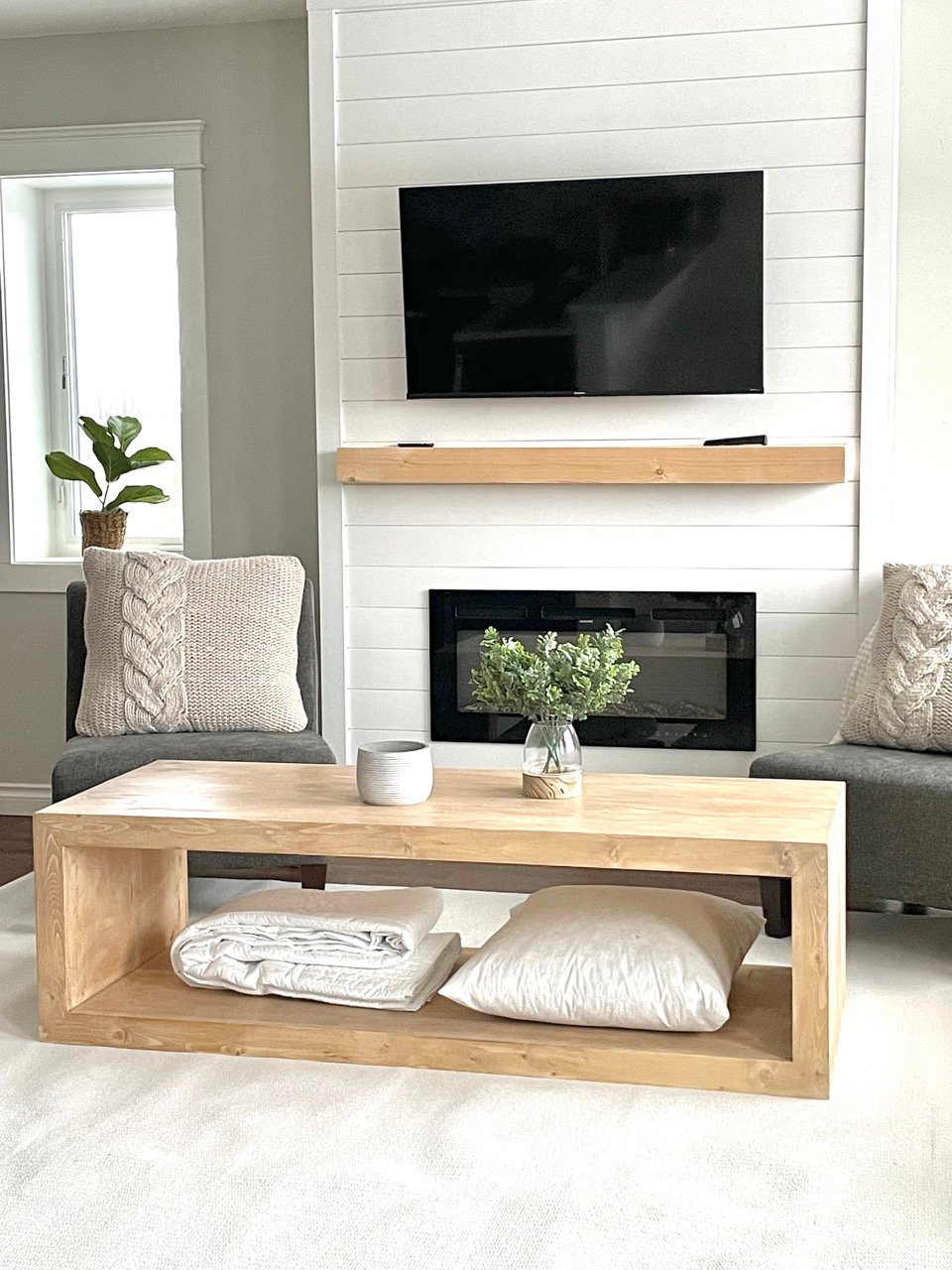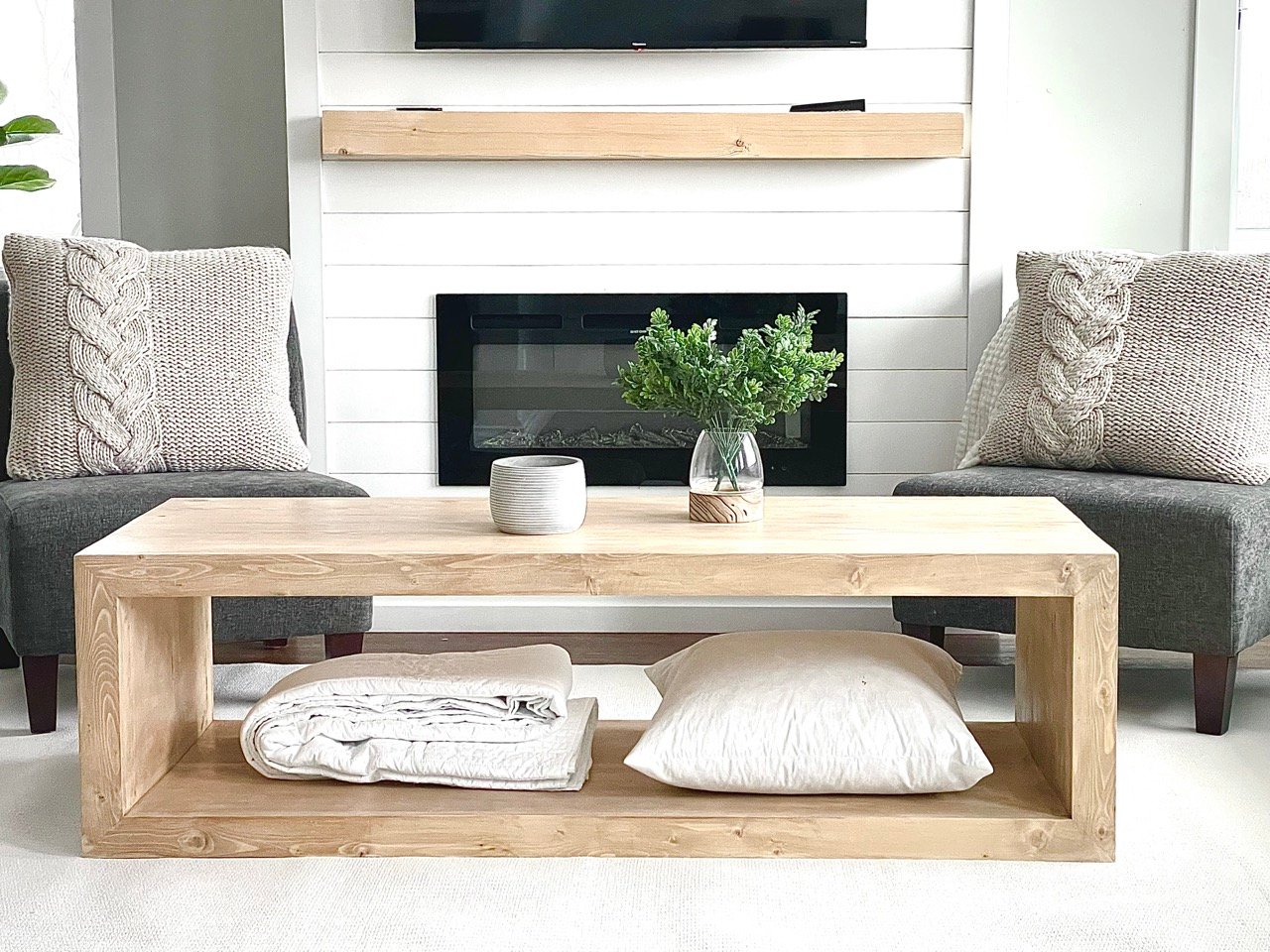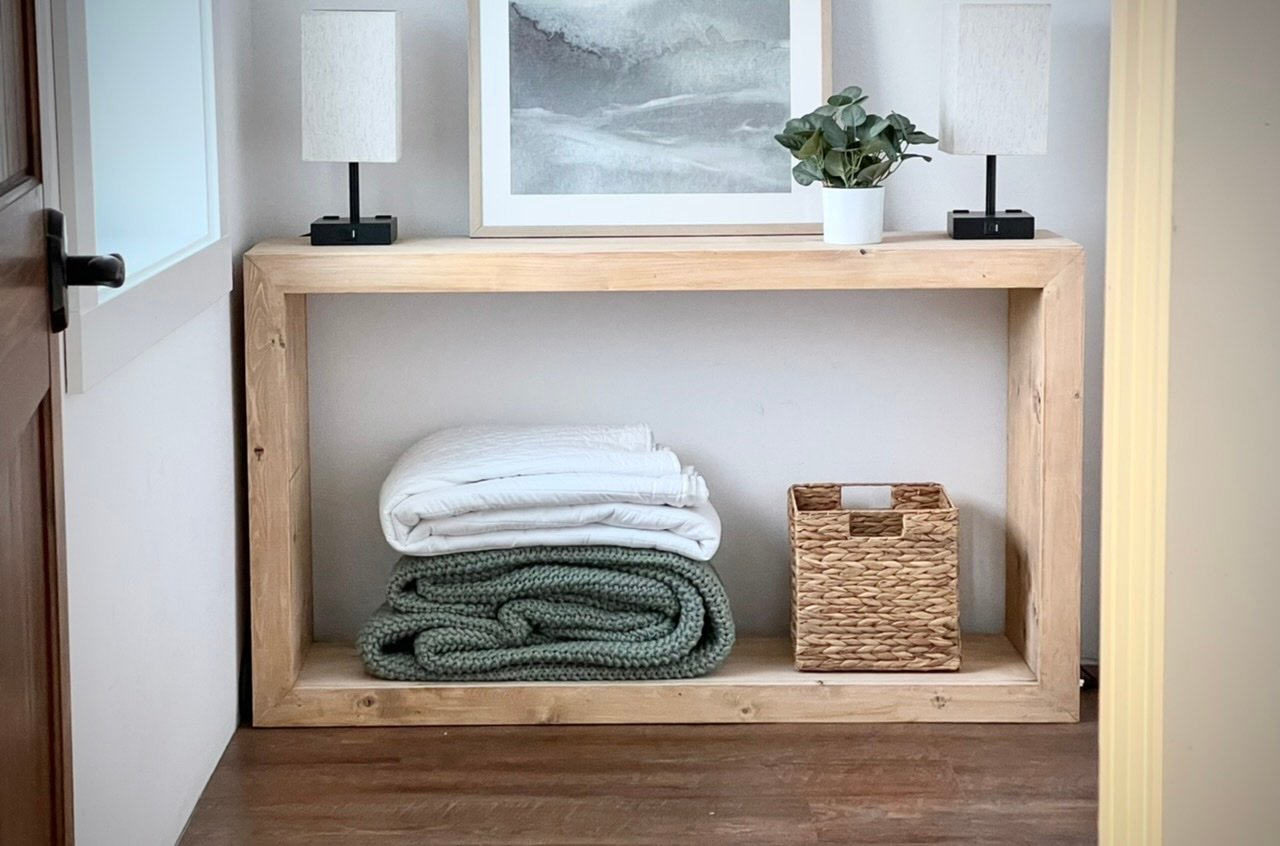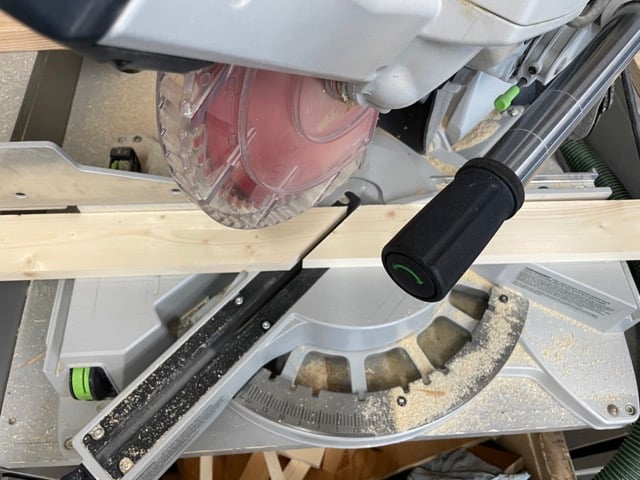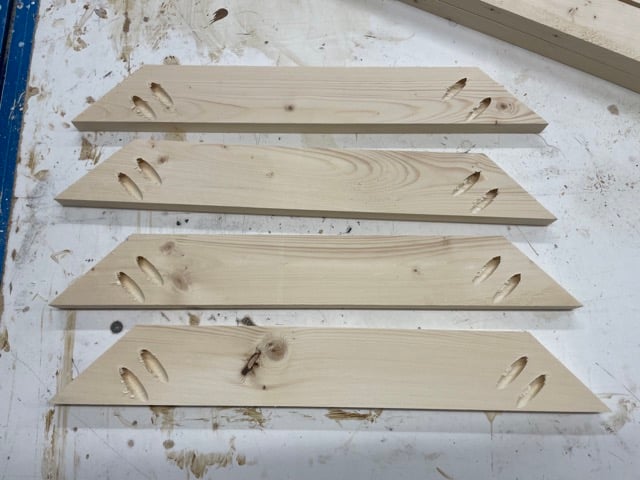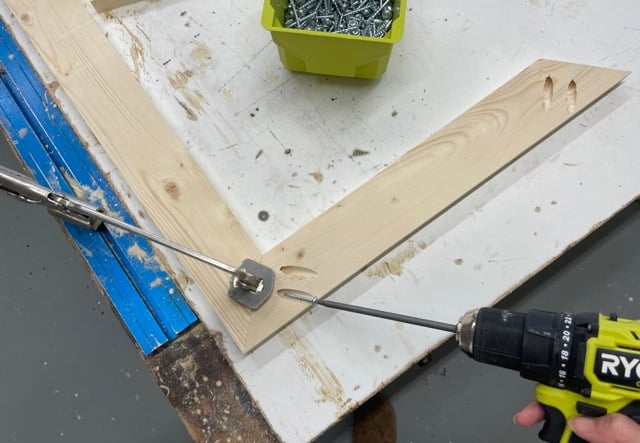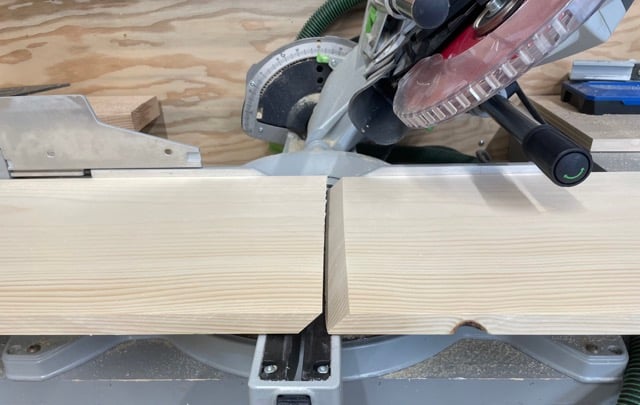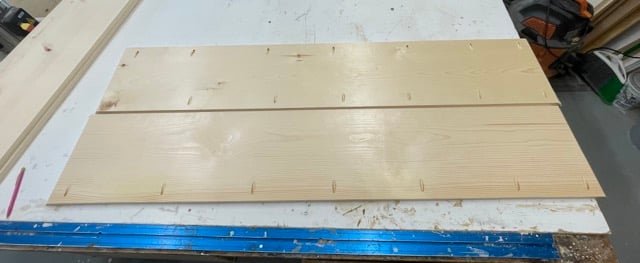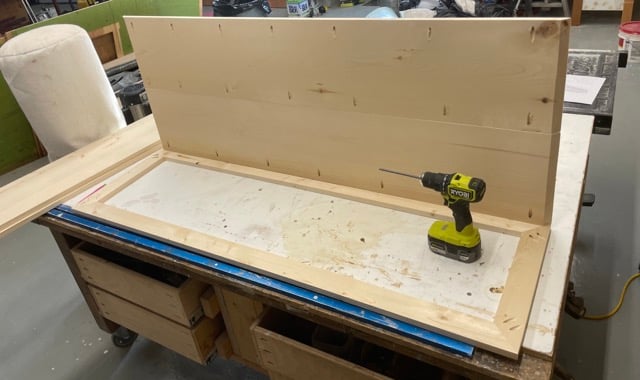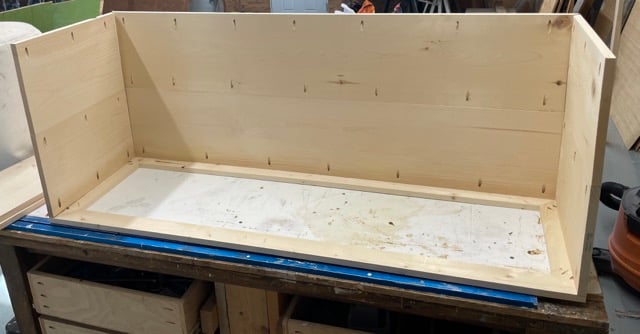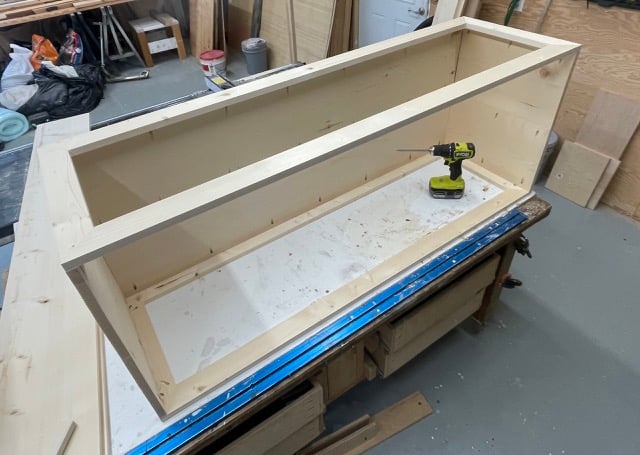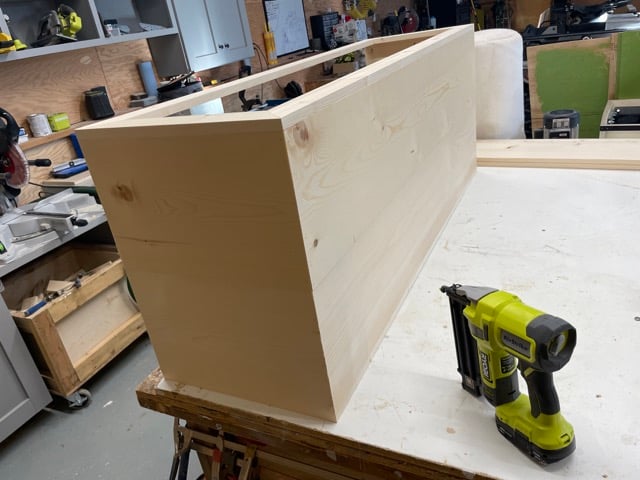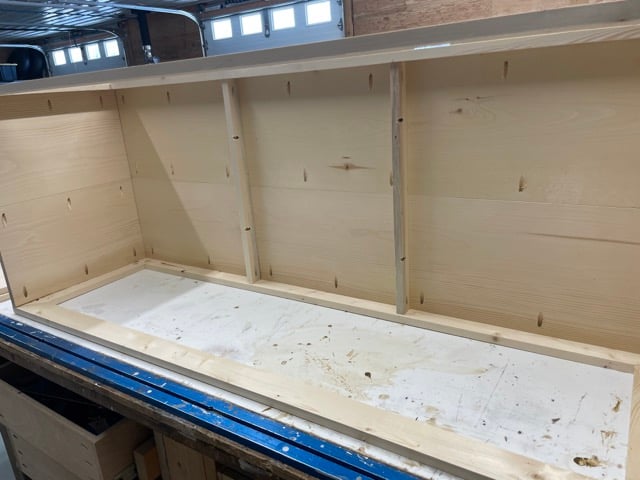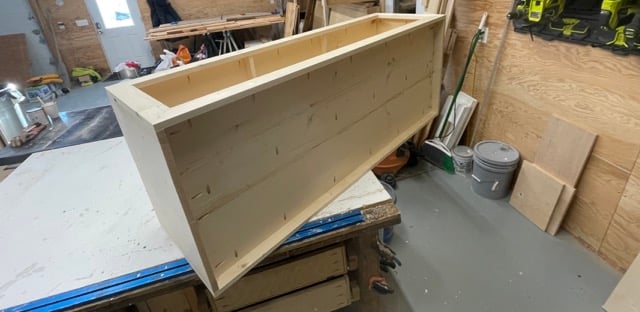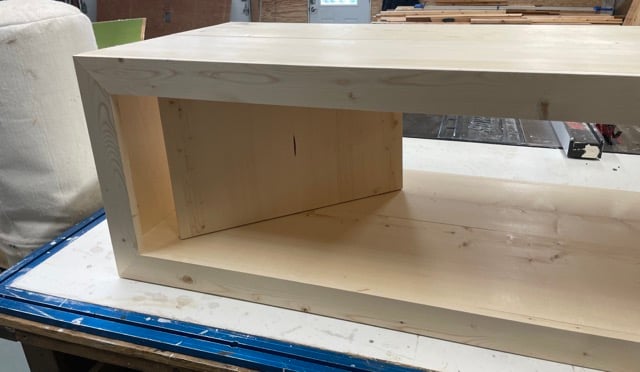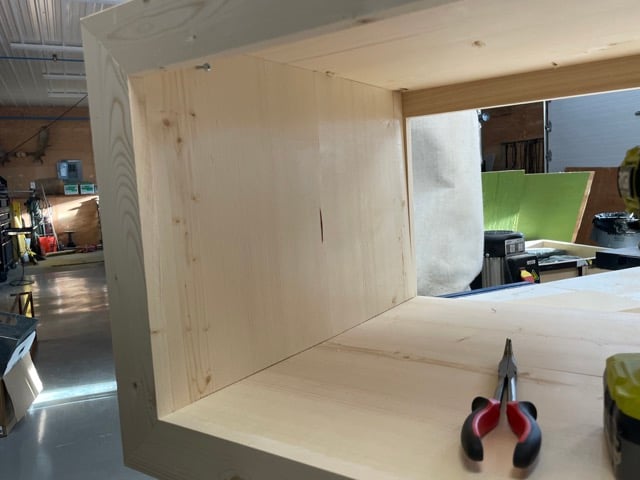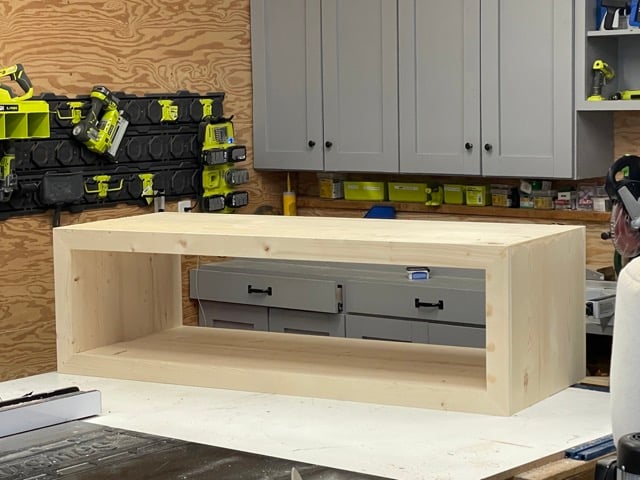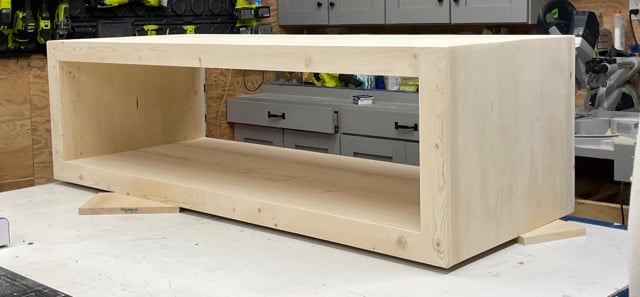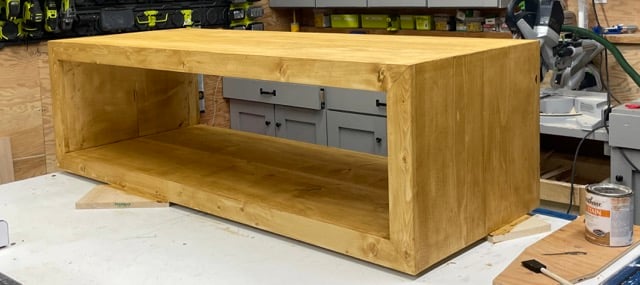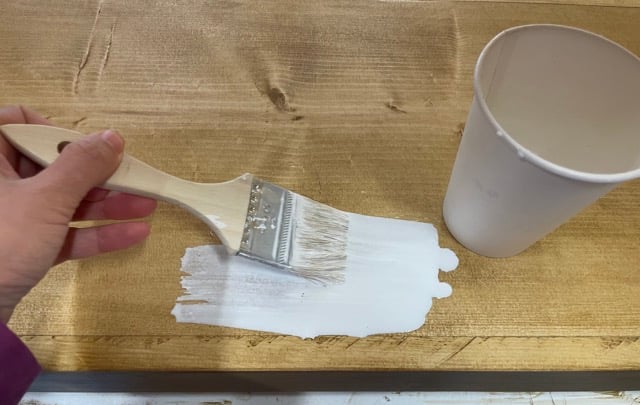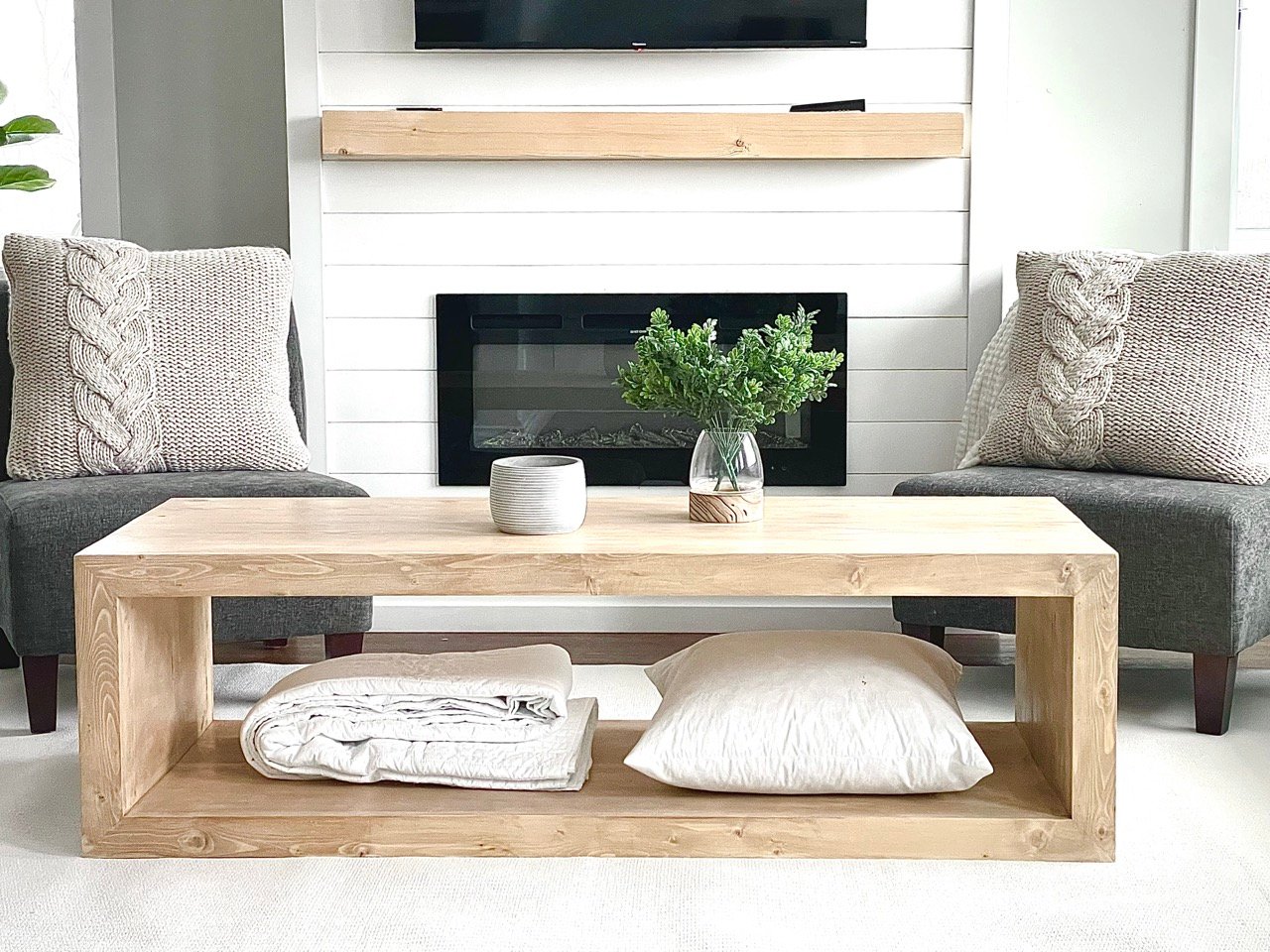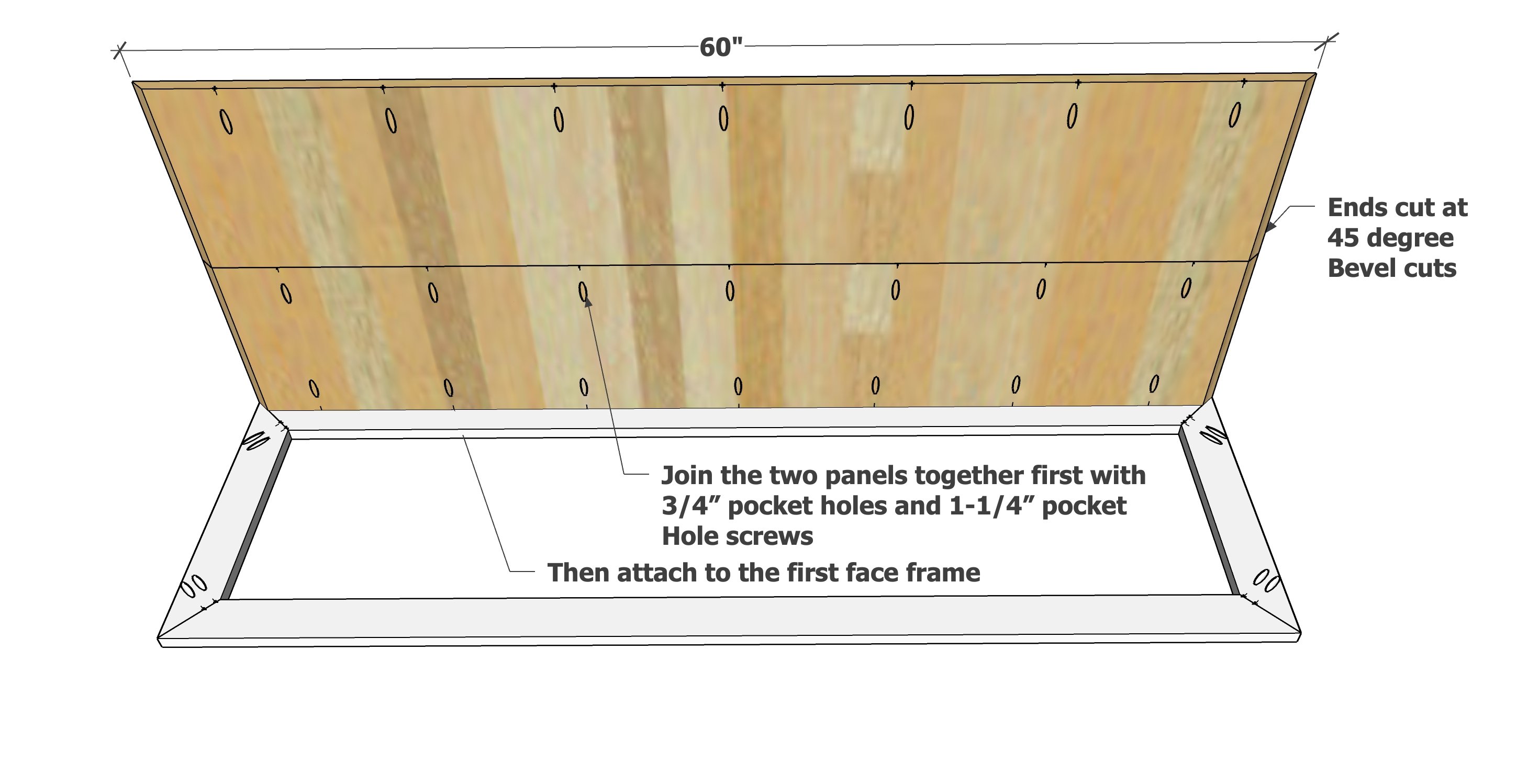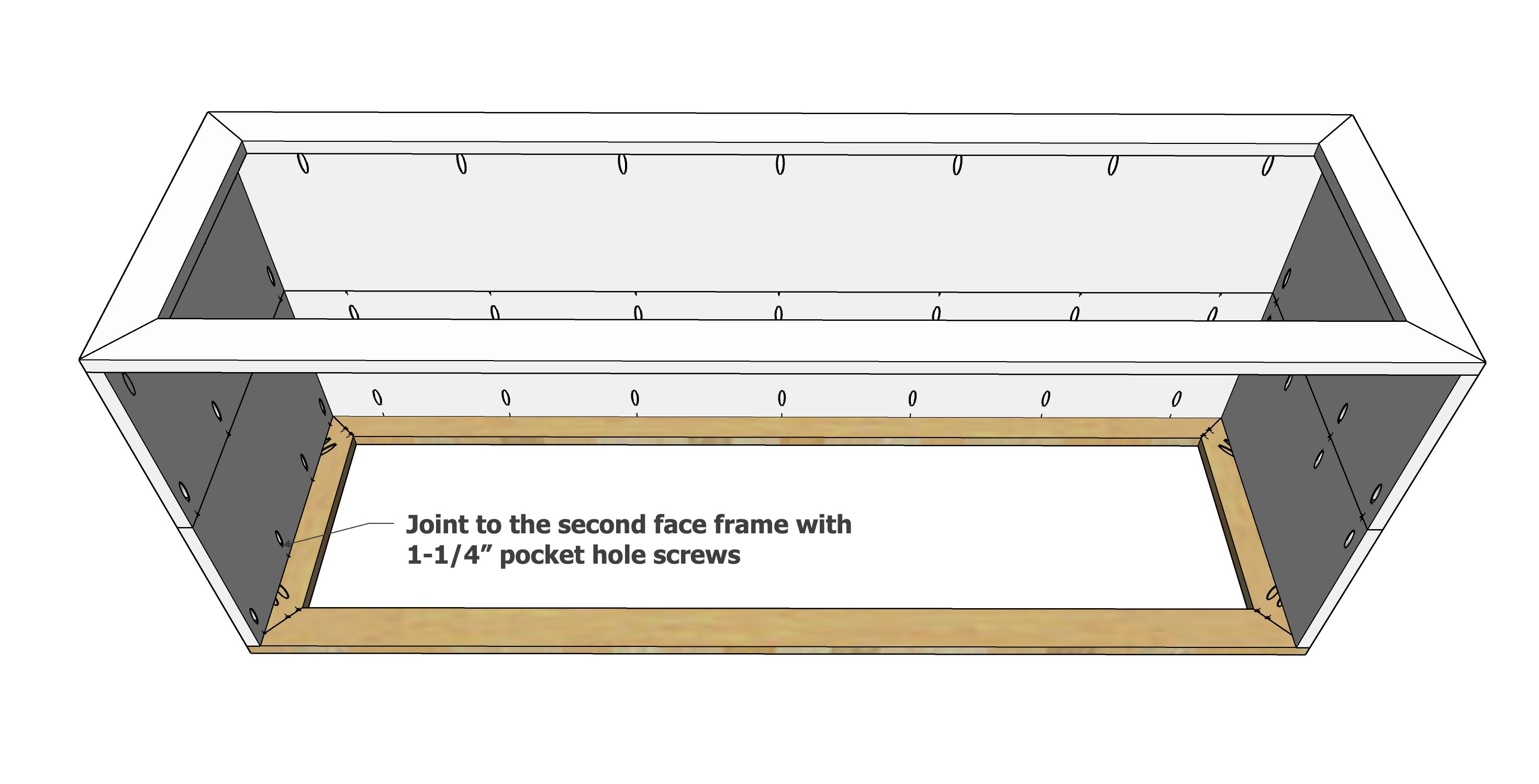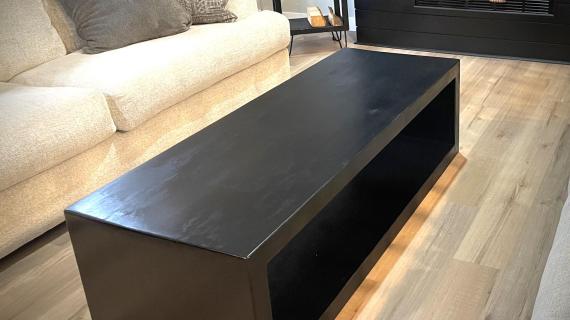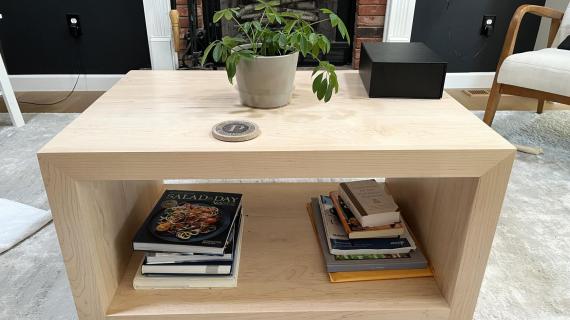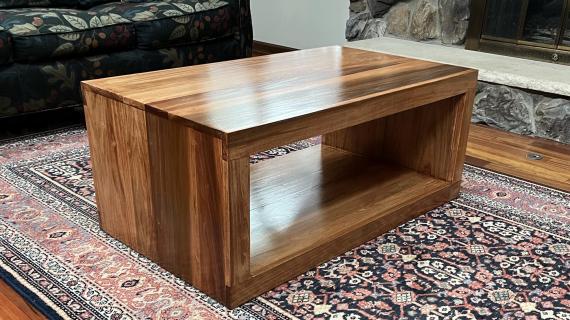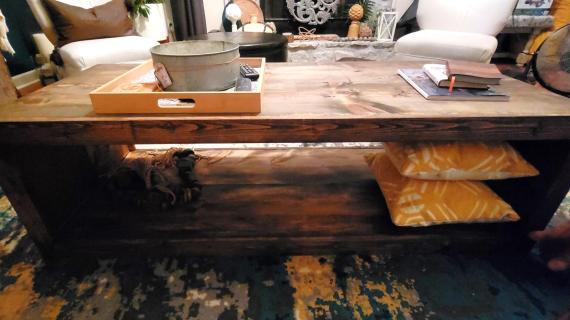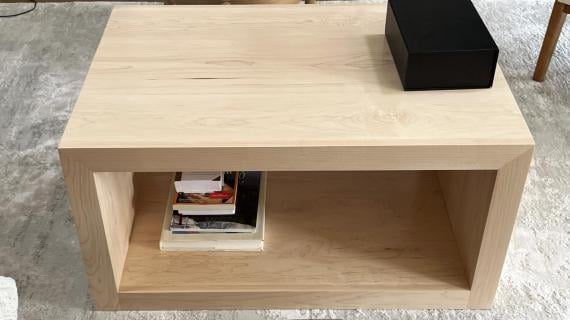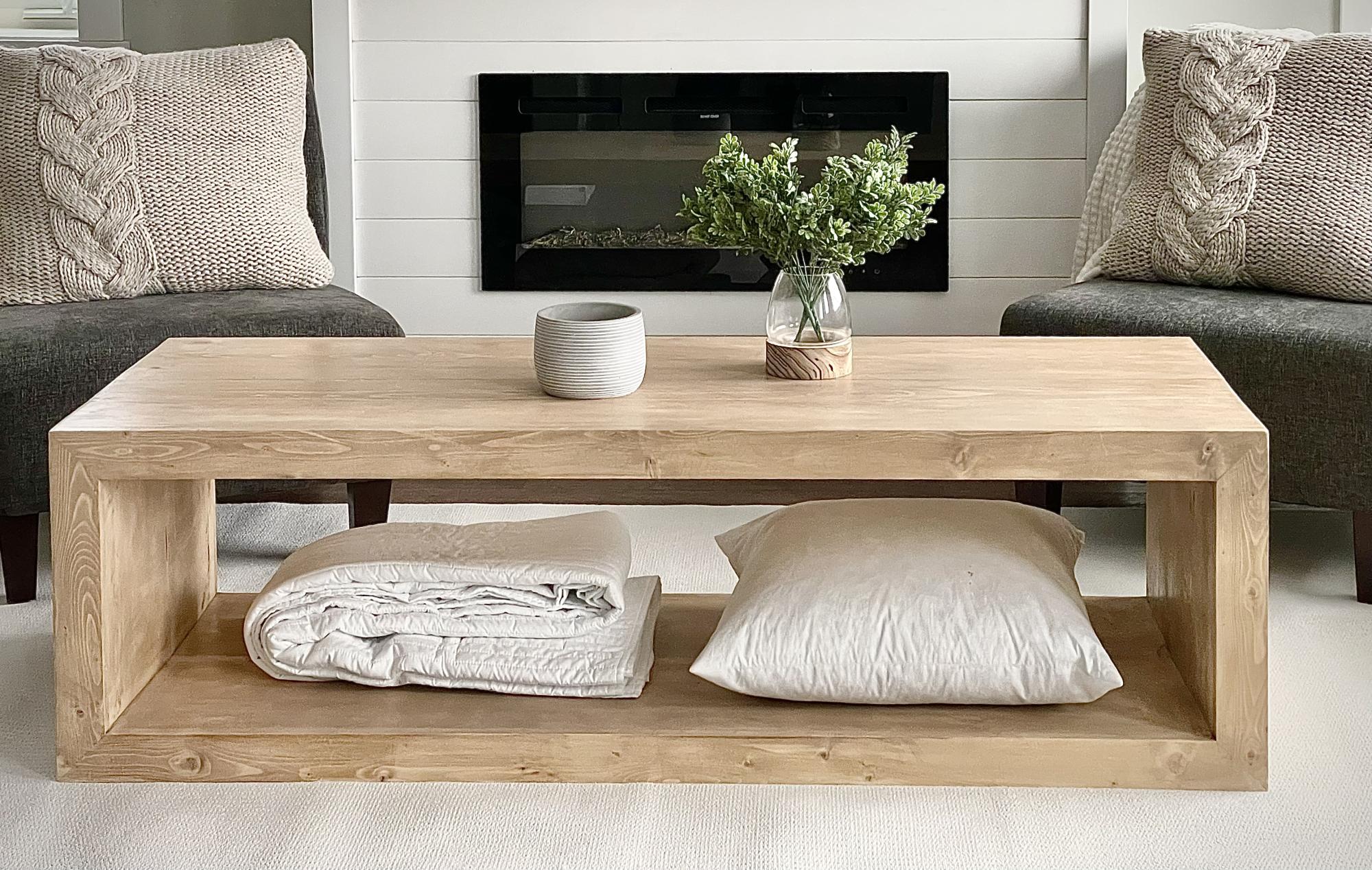
Free woodworking plans to build a modern, waterfall framed coffee table using 1x12s and 1x3 boards. This generously sized coffee table features mitered corners, a minimal, modern design, and large bottom shelf for storage. It's a beauty! Cost of lumber was about $150. Step by step plans from Ana-White.com
Pin For Later!
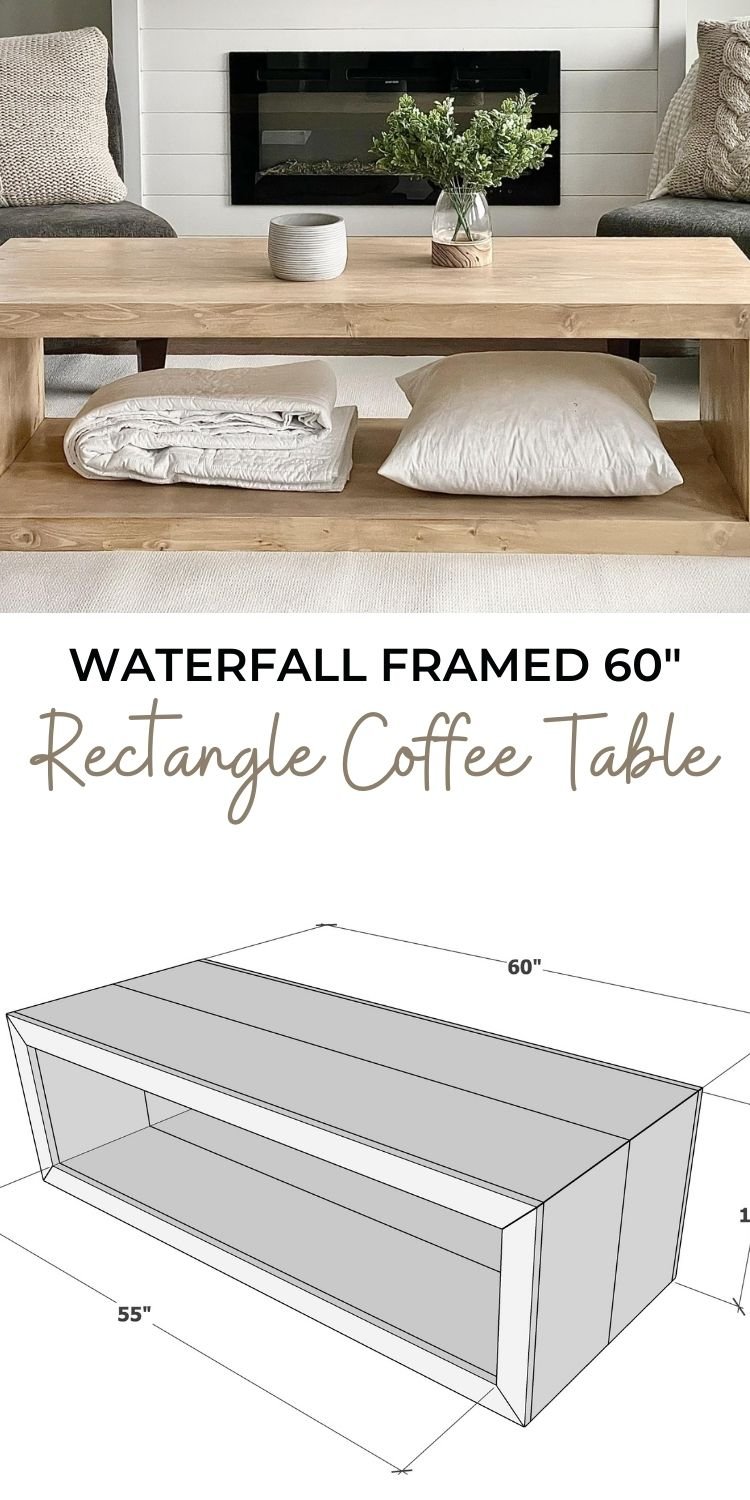
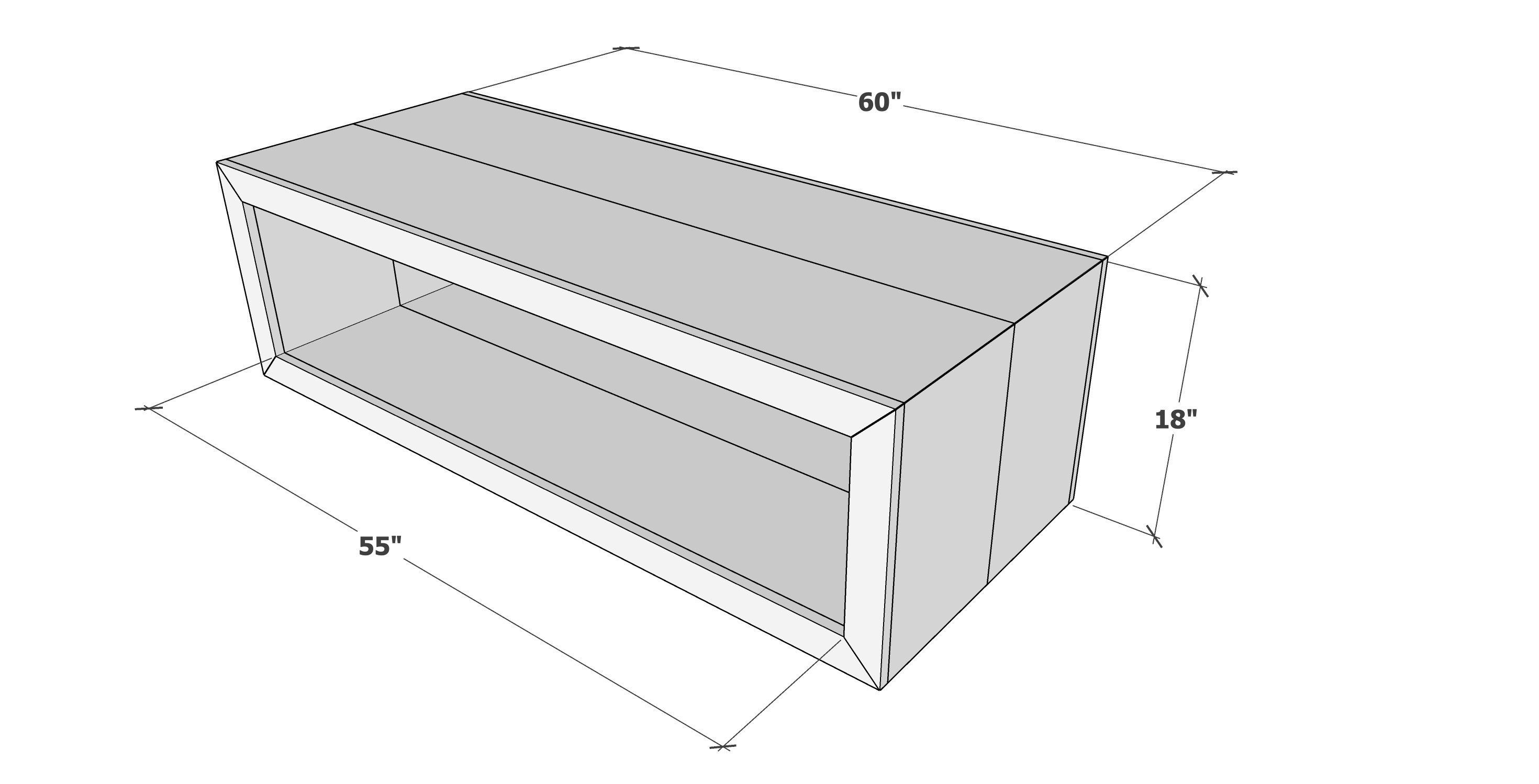
Preparation
- 4 - 1x12 @ 8 feet long
- 4 - 1x3 @ 8 feet long
- 1 - 1x2 @ 8 feet long
- 100 - 1-1/4" coarse thread pocket hole screws
- 1-1/4" brad nails
- wood glue
- stain, whitewash and poly (or other finishing materials)
The 1x12 boards need to be very square with no cupping, crowning or warping. Make sure they are dry.
You can rip rounded edges off with a table saw for a more precise edge to edge joint (I did)
- 4 - 1x3 @ 60" - both ends cut at 45 degree ANGLE, ends NOT parallel, long point to long point measurement (face frame)
- 4 - 1x3 @ 18" - both ends cut at 45 degree ANGLE, ends NOT parallel, long point to long point measurement (face frame)
- 2 - 1x12 @ 60" - both ends cut at 45 degree BEVEL, ends NOT parallel, long point to long point measurement (top)
- 4 - 1x12 @ 18" - one end cut at 45 degree BEVEL, long point measurement (outside sides)
- 2 - 1x12 @ 58-1/2" (bottom shelf)
- 4 - 1x12 @ about 14-3/4" (inside sides)
Cut longest boards first
All the 1x12 bevel cuts will fit on two boards, you can use the bevel cut from the previous cut to make the next cut.
It is difficult to cut the 1x12 bevels - practice and measure and make sure the cut is square all the way across
You will need a 10" sliding miter saw (12" preferred) to make these cuts
Test the miter and bevel on your miter saw and make sure cuts are precise using a speed square. Adjust if 45 degree angle and bevel are not dead on.
For long term durability and more professional results, I recommend using a pocket hole joinery system for wood joints. Here is a video with tips for using a pocket hole jig:
Instructions
Step 1
Cut the 1x4 boards for the face frames.
On the smaller face frame boards, drill two 3/4" pocket holes on each end as shown. Make sure the pocket hole is not visible on the outside of the face frame.
Attach together with 1-1/4" pocket hole screws.
Build two frames - make sure the two frames are identical.
Step 2
From one 1x12 board, cut the first top piece with ends beveled at 45 degrees. Make sure the cut is straight across - double check with a speed square. Reserve the scrap for cutting the side panels.
Cut the second top piece.
Drill pocket holes as shown to join the two tabletop boards together. Make sure pocket holes are drilled for attaching face frames on both sides.
Use 1-1/4" pocket hole screws and clamp each joint.
Then carefully attach the entire top piece to one of the face frames. The face frame and top should be perfectly smooth.
Step 3
Step 5
Cut the bottom shelf boards and drill pocket holes to join boards together. Also drill 3/4" pocket holes around all sides for attaching inside the face frame.
Carefully place inside the face frames.
Attach with 1-1/4" pocket hole screws, matching the top of the shelf with the top of the face frame insides as you attach.
Step 6
Step 7
Since the coffee table shelf and top have a wide span, 1x2s underneath can help.
But do make sure your 1x12s are fully acclimated to your moisture in your home (may be drier) before measuring and cutting these boards.
Measure and cut to fit the inside width.
Drill a pocket hole on each end, and three along the length.
Attach, about 20" from the sides, on both the top and bottom shelf, with 1-1/4" pocket hole screws.
Sand with 120 grit sandpaper in the direction of the wood grain.
I sanded with 220 grits sandpaper, very lightly.
I then vacuumed off any sanding residue, and wiped with a damp, lint free cloth.
Finally, I added a layer of poly to protect the finish and make it wipe clean.


